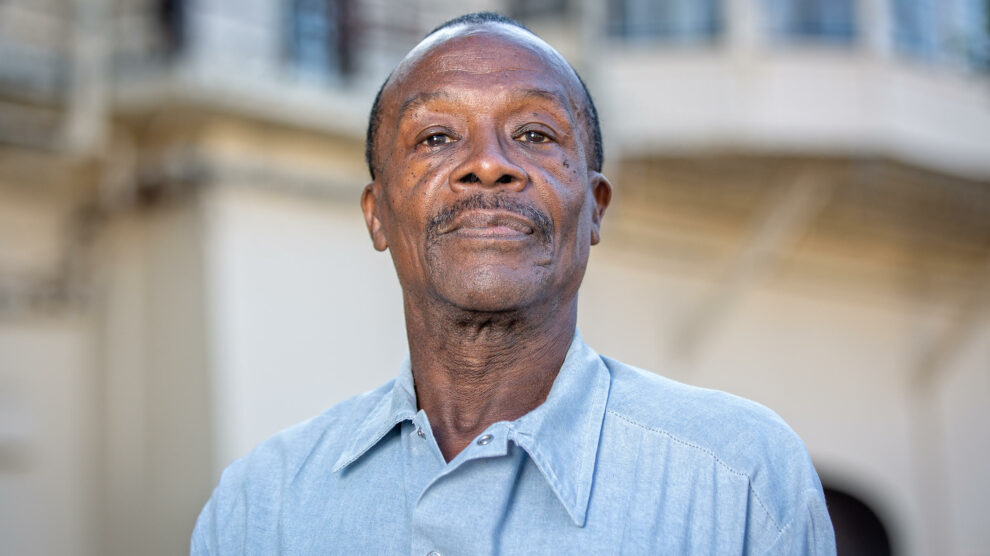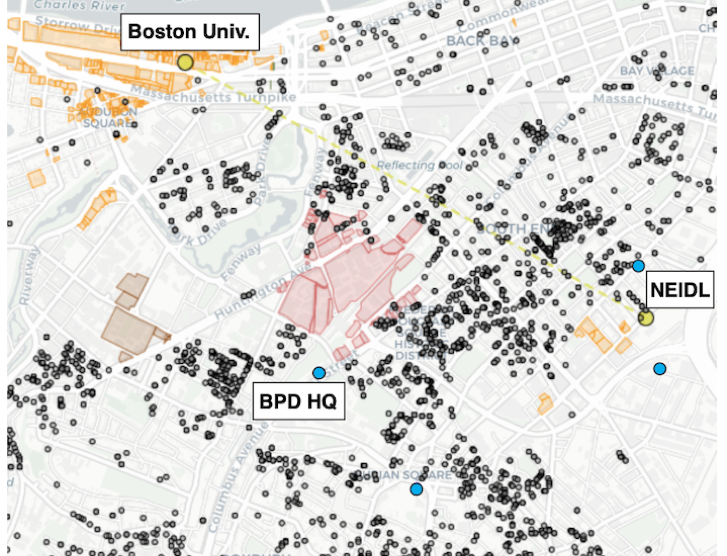From Pro-Choice Politics to Reproductive Justice
By Anya Metzer
Volume 22, number 2, Envisioning and Enacting the Science We Need

Healthcare practitioners regularly minimize the pain of people of color.1 This is particularly so for women of color, whose bodies have been subjected to regular suspicion and abuse. The fields of science and medicine, renowned for progress and reducing harm, have been consistently marshaled against people of color. A 2016 paper published by the National Academy of Sciences showed half of surveyed white medical students and residents endorsed the myth that black people’s skin is thicker and therefore had intrinsically higher pain tolerance. This has significant implications for racial disparities in healthcare and the interpellation of non-white patients.2 Unsurprisingly, a study into race/ethnicity and trust in physicians found that Black patients distrust physicians more than white patients.3
For women of color, compound discrimination intensifies marginalization. The extensive history of sterilization illustrates how racist execution of science has pillaged family life from women of color. During the twentieth century, thirty-two states deployed federally-funded sterilization programs targeting people of color, disabled people, and other marginalized groups, operating often on minors. Programs included “Mississippi appendectomies,” involuntary sterilizations chiefly of Black women for medical teaching purposes. The practice is not confined to a pre- World War II agenda: in the United States approximately one-third of twentieth-century sterilizations were in California, where 150 female prisoners were further sterilized from 2006-2010.4 From 1970 to 1976, up to 50 percent of Native American women were sterilized by state programs.5 These coercive procedures are anathema to the concept of reproductive choice. The passivity of mainstream white feminism to these abuses against people of color has engendered a reproductive rights movement that fails to address systemic infringements on the fertility of those marginalized under white supremacy.
***
Since January 2019, renewed attacks on abortion rights have been coursing through state senates, many deploying the specious ‘heartbeat’ measure of personhood to undermine meaningful access to abortion. Missouri, Kentucky, and Mississippi each have only one active abortion clinic and are in legal battles to remain open; many counties have none, or have centers that are inaccessible from rural areas.6 Across both major parties, politicians figure abortion as a moral rather than medical concern and urge that it be offered sparingly (“safe, legal, rare”), a qualification not made of other, more invasive medical procedures. The current political climate in the US (aggressive Republican agitation; limp Democratic “pro-choice” defense) has ushered in draconian anti-abortion legislation. Curtailing women’s reproductive rights is now a cornerstone of the Republican platform.
For half a century, Title X was the US government’s reproductive services offering for those skating along the fissures of the broken insurance model. The program has channeled millions of dollars into “family planning” for low-income and uninsured people, although funds have never covered abortion. In September 2019, a longstanding requirement that Title X patients be informed of, and supported in, all options in pregnancy was overturned. Now, abortions are forbidden on Title X premises. Patients can receive a list of referral clinics only if the majority do not provide abortions and those that do are not indicated.7 The notion of “choice” is stripped away by this carnival imitation of medical care whereby patients must guess, against the odds, how and where to procure a legal termination of pregnancy. The revision also now allows conservative, anti-abortion crisis centers to receive funds. In response, Planned Parenthood has rejected future Title X funding, as have several state governments. Title X as a route to reproductive healthcare has been contorted into an avenue towards forced births or the shuttering of clinics in the most underserved communities.
The revised Title X recycles weapons from the US government’s global campaign against abortion. The Mexico City Policy, or “global gag rule,” prohibits US aid going to abortion counseling or provision. Trump revived this rescinded policy in its most expansive form to date, banning NGOs receiving US support from offering abortion services through any means. Like clinics facing new Title X requirements, agencies must close these services or drastically shrink their budgets. For context, half of all abortions worldwide are deemed unsafe, 97 percent of which happen in developing countries.8 The gag extends to countries where abortion is legal, advancing a neo-colonial installation of foreign laws and values, and undermining individual autonomy. Initiatives to restrict abortion worldwide defy medical and sociological guidance. By criminalizing reproductive counseling, the practice of choice is impossible.
The International Women’s Health Coalition (IWHC) published a report in 2019 on the two-year impact of the gag. They declared it “harmful to the health and well-being of women, young people and marginalized communities.”9 IWHC found that the gag exacerbated existing barriers to contraception, HIV/AIDS treatment, cancer screenings, and gender-based violence support. The report cites deaths of young women from attempts to miscarry; as a South African HIV/AIDS advocate told IWHC, the policy is fundamentally “pro-birth,” not “pro-life.” The Mexico City Policy deliberately disempowers vulnerable people, removing capacity for informed, autonomous decision making about reproduction. The lethal consequences have not deterred the government from pursuing this policy. This betrays the reality that while abortion may be a preoccupation for Republicans, stripping women, non-binary people, and other marginalized groups, particularly in the Global South, of critical health resources and dignity animates this agenda.
***
America’s reproductive health agenda fails to value human life, evidenced by the systemic abuse of pregnant migrants at the southern border. In 2017, twenty-four-year-old Guatemalan “Olivia” was held by Immigration and Customs Enforcement (ICE) in Texas while seven months pregnant. Despite guidelines of use only when “absolutely necessary,” she was detained in shackles and endured intense pain for five days before a doctor was called. Olivia was consistently dismissed by medical staff. No one spoke Spanish to her, excluding her from medical expertise and leading to a misdiagnosis of infection when she was in preterm labor. Olivia describes staff “doing all these things to me, but they weren’t talking to me or telling me what was going on.” As labor progressed she “felt terrible” but “they weren’t taking me seriously.”10 As of April 2019, her asylum case was pending while her son, who has Down Syndrome, is with her sister. Olivia anticipated being deported back to Guatemala where the global gag rule has slashed health funding including Zika prevention and care programs for pregnant people.11
In facilities across several states pregnant detainees have received clothes so small they left welts on their stomachs and have been subjected to x-rays against FDA radiation guidelines.12 Since Trump came into office, miscarriages in ICE facilities have almost doubled.13 Twenty-eight-year-old Rubia received no care during her miscarriage: “There was no relief… I can’t even say how painful it is to be there without help, without support, and with the pain of having lost something so precious.”14 A UK review into migrant detention asserted that an “incontrovertibly deleterious effect” on the health of both pregnant person and fetus is “obvious” and recommended “absolute exclusion” of pregnant people from detention.15 From October 2017 to August 2018, 1,655 pregnant migrants were in ICE custody.16 The refusal to provide adequate obstetric support joins other abuses at the border which demonstrate the state’s ongoing selective regard for life, dignity, and family.
The splintering and politicization of reproductive healthcare endangers the most vulnerable. Further north, in July 2019, twenty-six-year-old Diana Sanchez went into labor in a cell in Denver, Colorado, two weeks into her prison sentence. She is currently pursuing a legal claim against the city and staff who forced her to give birth unassisted, alleging that the authorities “utterly failed to satisfy their legal and moral duty.” A nurse supplied an absorbent pad as her only aid, making the birth “a day of unnecessary terror, pain and humiliation” provoking “ongoing emotional trauma.”17 Hospital officials, once Sanchez was eventually seen, verified that withholding treatment had posed fatal risk to her and her baby. The legal case looks to make the authorities accountable for choosing “convenience over compassion,” a recurrent theme for marginalized pregnant people.
***
In its June 2019 editorial, The Lancet rejected the Mexico City Policy’s attempts to isolate abortion from its wider medical framework. The Lancet argued that integrating reproductive with sexual, maternal, and child healthcare acknowledges overlapping needs: “co-locating and improving linkages between services…can improve efficiency and health outcomes.”18 The idea promulgated by the gag, and in the new iteration of Title X, that abortion is divisible from gynecology, obstetrics, perinatal care, and sexual health, is medically unsound and operationally ineffective.
Healthcare necessarily encompasses reproductive health. Criminalizing abortion in a healthcare setting creates legal entanglements in instances of miscarriage, and the use of abortion to resolve a health crisis.19 Offering abortion as a routine service minimizes risk. The development of medical abortion (oral or vaginal pills) has made safe self-administration increasingly possible. Medical abortion can also help normalize the procedure because it’s non-surgical. It can be a more convenient option with the majority of US abortion patients already parenting children, and also ensure autonomy for those enduring unwanted pregnancy as a result of abuse.20
***
In August 2019, Cherisse Scott opposed the redefinition of fetal viability (de facto outlawing abortion) in the Tennessee state senate in her capacity as CEO of the nonprofit SisterReach. Scott was interrupted by an early recess when she raised the racialized nature of reproductive rights. As she argued, “Black women have never had full autonomy over our bodies or self-determination over whether to be a parent or not.”21 This assertion is at the core of the reproductive justice (RJ) movement, founded in 1994 by Black feminists organizing as Women of African Descent for Reproductive Justice (WADRJ). They advocated for access to abortion alongside the necessary conditions to have and raise a child with dignity and safety. RJ combats the fact that, in the words of umbrella organization SisterSong, “the women’s rights movement, led by and representing middle class and wealthy white women, could not defend the needs of women of color and other marginalized and trans* people.”22 The movement grew from the community most affected by systemic injustices and goes beyond access to abortion toward just redistribution of power in healthcare and family life.
RJ addresses reproductive rights within wider power structures, confronting issues like African- American, Native American, and Alaska Native people being three times as likely to die of pregnancy-related causes than their white counterparts.23 RJ activists further argue that paucity of general medical provision, unsafe drinking water, under-resourced schools, poverty wages, and police brutality undermine the meaningful practice of choice in family life. These are all issues asymmetrically dispersed across socioeconomic and racial divides. The US currently offers no guaranteed parental leave, scarce childcare, commodified maternal and child healthcare, and systematic mistreatment of incarcerated pregnant people. In such a hostile environment for birthing and nurturing a child, “choice” is a fantasy. A longitudinal study found that 73 percent of abortions were attributed primarily to financial stress.24
As sociologist Dorothy Roberts elucidates, the language of choice prevents people from claiming the public resources necessary to enjoy sovereignty over their bodies and lives. Instead, “women without sufficient resources are simply held responsible for making ‘bad’ choices.” Roberts bears witness to mainstream pro-choice organizations as tacitly complicit in 1990s welfare caps and other punitive initiatives against Black mothers and parents. By contrast, she argues, the RJ framework articulates “a concrete basis for building radical coalitions,” engaging racial, economic, and environmental justice advocates to collectively address “social justice, human rights and women’s well-being.”25
The US government’s so-called “pro-life” agenda is a fig leaf concealing the dissolution of rights protecting the most marginalized and the disintegration of infrastructure that fosters health and bodily autonomy. RJ is a critical intervention to ensure an intersectional approach in combating attacks on reproductive rights. The medical community, aware of the necessity of robust sexual and reproductive healthcare, should support those delivering this critical work in an increasingly stressed environment with advocacy or service provision. Doctors and scientists should promote pathways to care that attend to specific needs for women and marginalized groups, and listen to and believe the needs of their patients. This spans sensitivity to sexual assault survivors during pelvic exams to providing non-partisan family planning counseling. It also includes holding authorities accountable for the misuse of medicine by sharing evidence supporting comprehensive reproductive services. Meanwhile, the scientific community must raise clinical alarms about the socioeconomic policies that have caused so much harm to communities and their health. The suppression of people of color’s reproductive agency through sterilization, withdrawal of maternity care in detention, and cultivation of hostile socioeconomic circumstances is inherently part of reproductive rights. The reproductive justice paradigm liberates all users of sexual and reproductive healthcare and moves us closer to “choice” as a meaningful organizing principle.
Here are some organizations working in the struggle for reproductive justice. Learn more about them and take action!
- Black Women for Wellness
- Black Women’s Health Imperative
- Circle of Health International
- Feminist Women’s Health Center
- Las Americas Immigrant Advocacy Center
- National Latina Institute for Reproductive Health
- National Network of Abortion Funds
- New Voices Pittsburgh
- RAICES
- Reproductive Health Access Project
- SisterLove
- SisterReach
- SisterSong
- SPARK Reproductive Justice Now
- Women’s Refugee Commission
About the Author
Anya Metzer works in international development with a programmatic focus on women and gender norms. She studied literature at Oxford University and the University of Chicago where she specialized in gender, pathology, and Victorian social thought. Anya writes on a freelance basis and her work has been featured in publications including REALLIFE Magazine and Ache.
References
- J. Corey Williams, “Black Americans don’t trust our healthcare system – here’s why,” The Hill, August 24, 2017.
- Kelly M. Hoffman, Sophie Trawalter, Jordan R. Axt, and M. Normal Oliver, “Racial bias in pain assessment and treatment recommendations, and false beliefs about biological differences between blacks and whites,” PNAS 113, no. 16 (April 19, 2016).
- Katrina Armstrong, Karima L. Ravenell, Suzanne McMurphy and Mary Putt, “Racial/Ethnic Differences in Physician Distrust in the United States,” Am J Public Health, 97, no. 7 (July 2007).
- Lisa Ko, “Unwanted Sterilization and Eugenics Programs in the United States,” PBS Independent Lens, January 29, 2016.
- Ko, “Unwanted.”
- Jessica Arons, “The Last Clinics Standing,” ACLU, accessed October 1, 2019.
- Margaret Talbot, “How the Trump Administration is Stigmatizing Abortion,” The New Yorker, August 24, 2019.
- ‘The devastating impact of Trump’s global gag rule,” The Lancet, 393, no 10189 (June 15, 2019).
- Vanessa Rios, “Crisis in Care: Year Two Impact of Trump’s Global Gag Rule,” International Women’s Health Coalition, 2019.
- Tina Vasquez, “ICE Increased Risks for Pregnant Migrants in Detention. What Is The Agency Doing About It?” Rewire.News, April 5, 2019.
- International Planned Parenthood Federation, “Policy Briefing: The Impact of the Global Gag Rule,” January 2019.
- Ema O’Connor and Nidhi Prakash, “Pregnant Women Say They Miscarried in Immigration Detention And Didn’t Get The Care They Needed,” Buzzfeed, July 9, 2018.
- Scott Bixby, “Immigrant Miscarriages in ICE Detention Have Nearly Doubled Under Trump,” The Daily Beast, March 2, 2019.
- Ema O’Connor and Nidhi Prakash, “Pregnant Women.”
- Stephen Shaw, “Review into the Welfare in Detention of Vulnerable Persons: A Report to the Home Office,” Crown, January 2016.
- Bixby, “Immigrant Miscarriages.”
- BBC News, “Denver lawsuit alleges woman had to give birth alone in a jail cell,” August 29, 2019.
- “The devastating impact of Trump’s global gag rule,” The Lancet 393, no. 10189 (June 15, 2019).
- Andrea Rowan, “Prosecuting Women for Self-Inducing Abortion: Counterproductive and Lacking Compassion,” Guttmacher Institute 18, no. 3 (September 22, 2015).
- Luu D. Ireland, “Who are the 1 in 4 American women who choose abortion,” The Conversation, May 30, 2019.
- Cherisse Scott, as told to Marie Solis, “I Was the Only Black Woman to Testify Against an Abortion Ban. They Cut My Mic,” Vice, August 22, 2019.
- SisterSong, “About Us,” SisterSong, sistersong.net, accessed October 1, 2019.
- Emily E. Peterson, Nicole L. Davis, David Goodman, et al., “Vital Signs: Pregnancy-Related Deaths, United States, 2011-2015, and Strategies for Prevention, 13 States, 2013-2017,” Morbidity and Mortality Weekly Report, Centers for Disease Control and Prevention 68, no. 18 (May 10, 2019).
- Luu D. Ireland, “Who are the 1 in 4 American women.”
- Dorothy Roberts, “Reproductive Justice, Not Just Rights,” Dissent, Fall 2015.





